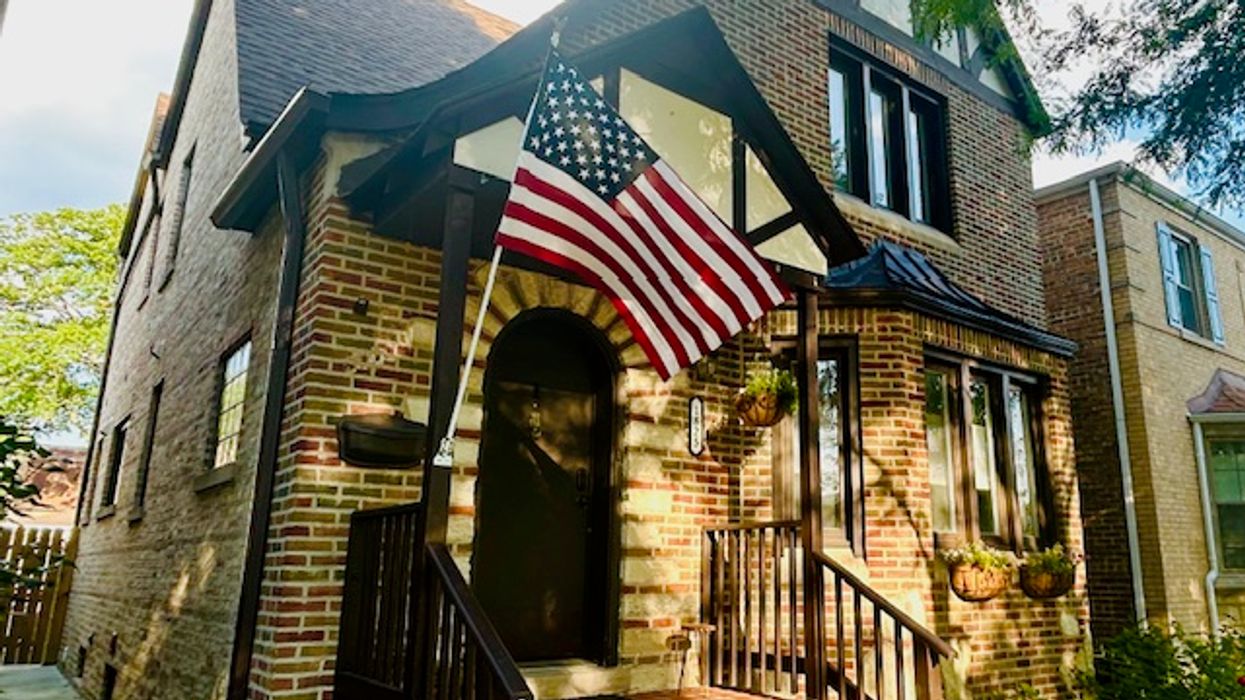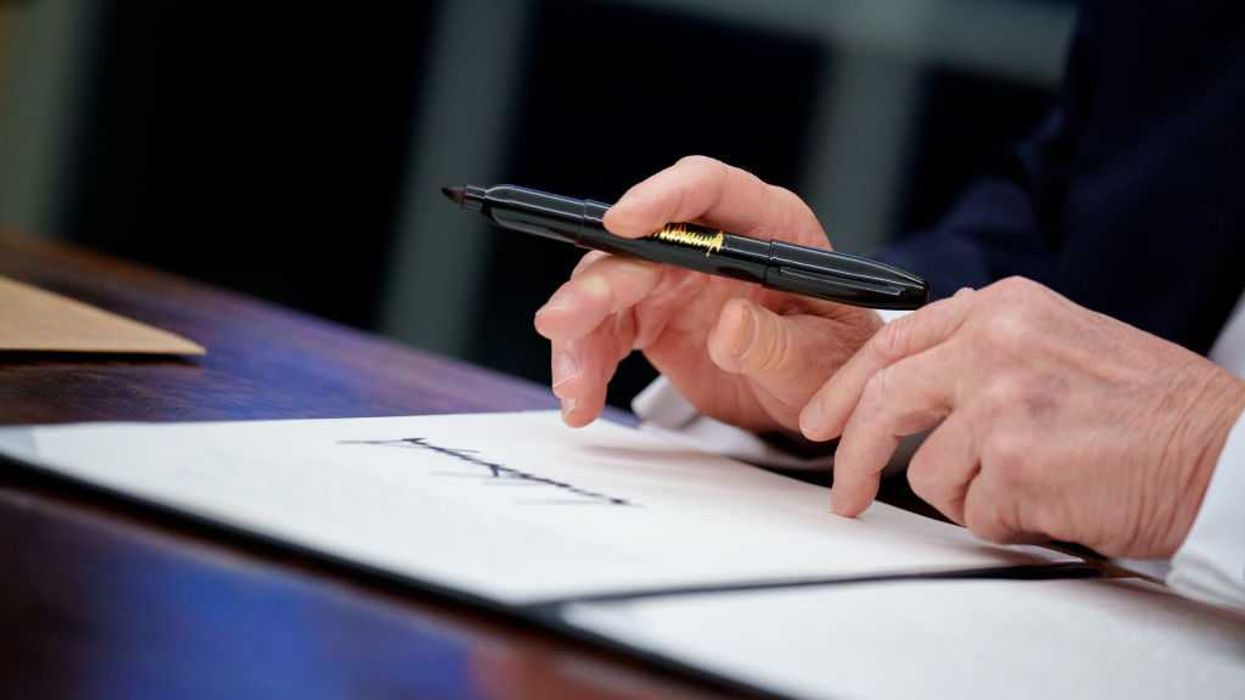The American flag has long stood as a unifying emblem of democracy, freedom, and national identity. Still, its meaning shifts over time and in different contexts, influenced by political events, social movements, and individual interpretations. Our current deeply divided civic climate is no exception.
The strongest memory I have of raising the "Stars and Stripes" was on the days following the September 11, 2001, terrorist attacks.
I was in New York City when it happened. I was a producer at NBC New York at the time. While I had no intention of leaving my post in the newsroom, once Manhattan was locked down, I couldn't go anywhere. I spent the next couple of days working around the clock reporting on the latest developments with brief breaks to rest.
When I finally went home, I was met by a row of American flags waving from most, if not all, of the houses in my street. Before entering the front door or saying a word to my wife, I went into the garage, found my flag, and placed it outside our house. We stood in front of it, holding each other, sobbing, mourning.
In the aftermath of the 9/11 attacks, the American flag became a powerful symbol of unity, resilience, and shared grief. Displayed not just on homes, but on cars, public buildings, and people, like a blanket or shield—perhaps both. It served as a visual reminder of solidarity during a time of national trauma. Politicians, celebrities, and ordinary citizens alike embraced the flag as a nonpartisan emblem, temporarily setting aside their differences to remember the victims and honor the first responders. While interpretations of patriotism varied, the widespread display of the flag reflected a collective desire for cohesion in the face of tragedy. Over time, its meaning evolved, but in those immediate post-9/11 days, it functioned as a rare unifying force in a deeply shaken nation.
That Was Then, This Is Now
This week, I raised the American flag outside my home again. It has been a while since I have done so. Perhaps because I have taken for granted that all the flag stands for, beginning with democracy, will always be present. After all, democracy is often tested but ultimately endures. Still, this year is different. I hesitated to put up the flag.
As an independent voter, who has backed Democrats and Republicans in elections, but never voted for Trump —I feared being labeled as a supporter of his political agenda.
The return of Donald Trump to the White House has been met with judgment for actions that some observers argue undermine democratic norms and institutions. For instance, critics highlight challenges to the integrity of electoral processes, attempts to influence regulatory bodies and the judicial system, which have prompted discussions about the separation of powers and the potential erosion of checks and balances. While supporters of the administration argue that it is merely seeking to reform and hold existing systems accountable, the ongoing debates reveal deep divisions regarding the state of democracy in the United States.
As reported by the Associated Press, Trump has pardoned those who attacked the U.S. Capitol to overturn his 2020 election loss, placed loyalists atop the FBI and military, and purged the Department of Justice, which dropped investigations against Trump allies. He declared control over independent agencies, such as the Federal Election Commission, and punished media outlets for coverage he disliked. His allies suggested he could defy court orders. And that was just his first six weeks back in office.
A recent NPR/PBS News/Marist poll found that three-quarters of Americans say democracy is under serious threat. The U.S. is grappling with what it means to be American, who is essential to its story, who belongs, who doesn't, and which direction the country should take — all while Americans are expressing very little faith in its political leadership, the survey finds, reports NPR. I am among the concerned.
The American flag is frequently displayed at Trump rallies. Does anyone remember the video of Trump hugging and kissing the flag at CPAC 2020? It's uncomfortable to watch even now.
Some argue that the American flag has become heavily associated with Trump and his political movement, leading to a perception that it represents an "us" versus "them" mentality rather than unity. This has led some to feel the flag has been "hijacked by the political right". After all, the flag was prominently on display during the January 6 Capitol riot—where many carried flags alongside extremist insignia—in that moment, the Stars and Stripes took on a more polarized meaning for some Americans.
For many on the right, the flag represents patriotism, law and order, and resistance to perceived threats against traditional values. Meanwhile, some progressives have grown hesitant to embrace the flag, arguing that type of patriotism is associated with exclusionary ideologies. Polls suggest that younger, liberal-leaning Americans are less likely to display the American flag than older, more conservative Americans. Others, however, like myself, reject the idea that extremists should dictate its meaning, insisting that the flag belongs to all Americans.
In last month's “No Kings” protests nationwide, the flag was flown. In the anti-ICE demonstrations in Los Angeles, the flag was flown. I promise you that in the "Free America" rallies this Independence Day, you will see the American flag waving.
Standing Up and Speaking Out
As I raised my American flag outside my home in Chicago, Illinois, celebrating the United States' birthday, I reflected on what it means to me. I thought of my parents, immigrants from Peru, and their struggle to make a good life in their adoptive country. I thought about marching with my daughter, Isabella, advocating for equal rights and social acceptance of the LGBTQ+ community. I thought of my cousin-in-law, Phil Giordano, who enlisted in the military after the 911 attacks. I thought of all the good and the bad the flag has represented these past 249 years. And I thought, this is not the time to hide, to stay quiet, to wait until the storm blows over.
This is the time to stand up and speak out! What that means to me personally is to leverage my lived experiences, including my privilege, to do as John Lewis, one of my heroes, once said:
"Do not get lost in a sea of despair. Be hopeful, be optimistic. Our struggle is not the struggle of a day, a week, a month, or a year, it is the struggle of a lifetime. Never, ever be afraid to make some noise and get in good trouble, necessary trouble."
What that means to me as a journalist is to call truth to power:
-Ensuring that those in positions of authority are held accountable for their actions and decisions.
-Act as a check on power by providing the public with information needed to make informed decisions and participate in self-governance.
-Transparency in reporting that is fair and accurate.
And always, unapologetically defend the role of a free, independent press enshrined in the First Amendment to the U.S. Constitution because an informed citizenry is essential to the health of our democracy.
In these times of political turmoil, social unrest, and economic challenges, democratic institutions and processes face significant tests. However, the strain on democratic norms can also foster increased civic engagement and encourage dialogue among citizens.
Democracy has consistently demonstrated its ability to adapt under pressure, addressing diverse perspectives and changing societal needs. Despite these challenges, it has the potential to recalibrate and restore itself, reaffirming its foundational principles of representation, accountability, and the rule of law.
So, go ahead, wave that beautiful red, white, and blue on its birthday, and every day.
Hugo Balta is the executive editor of the Fulcrum and the publisher of the Latino News Network. Balta is the only person to serve twice as president of the National Association of Hispanic Journalists (NAHJ).




















